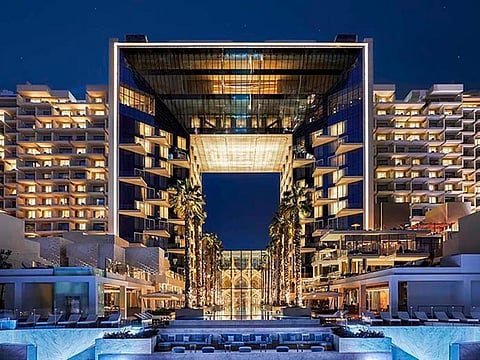UAE’s hotels are definitely not having a summer slowdown, as occupancy crosses 80%
Hotels record 80%+ occupancy and double in ‘22, while staycations are helping too

Dubai: The UAE’s hotels are not taking it slow this Summer, with many properties cruising along with 80-85 per cent occupancy levels. The strong numbers have come as a surprise even for many hotel operators, who had been expecting a quieter fe weeks ahead of September.
What’s happening is that uncertain weather in Europe and the more recent unfortunate situation in Hawaii forced a few cancellations, and a lot of that traffic is getting diverted to Dubai and the UAE. Plus, for these visitors, the softening in hotel room rates here also come with its advantages compared to trip to Europe or elsewhere.
Hotel sources confirm of a growing influx of visitors from emerging source markets such as Brazil. And the staycation demand continues to be be consistent for a third straight year.
So much so, UAE hotel occupancy levels have completely defied norms this summer, with a 20 per cent increase from 2022. Beachside resorts and luxury properties are reporting even higher than usual occupancy for this time of the year.
Rate cooling down helps
A two-night stay would average between Dh439 (for business hotels) to Dh1,522 (at beachside resorts), but still 30 per cent cheaper than the peak-time rates.It also helps that the average length of stay of guests increased to around 4 nights (up from 2/3), according to hotel industry data provider STR, leading to high average daily rates (ADR) and Revenue per Room (RevPar) for UAE properties.
Highest summer occupancy ever?
International visitors and staycationers have contributed to the increase in occupancy. “Hotel offers and summer deals - complementary upgrades, discounts on spa treats, and free room nights as well as the annual Dubai Summer Surprises (DSS) - have played a key role in the substantial bookings surge,” said Mouhamed Abdulkhalek, Managing Director, Akhom Consulting.
The ‘bleisure’ trend has also contributed to a surge in bookings. “Dubai is a leader in the digital nomad community, and the government has introduced new visa types to make it an easy choice for business owners to relocate to Dubai, driving demand,” said Robert El Khoury, Vice-President of Sales and Marketing at JA Resorts and Hotels, which is having occupancy of 90 per cent during weekends and mid-80 per cent on weekdays, and both double of last year’s results.
At some properties, staycations comprise 30 per cent of all guests, said Richard Haddad, CEO of Ishraq Hospitality.
Soaring revenue gains
According to STR data, the average daily rate of Dh534 during the first six months of the year surpassed that in H1-2019 (Dh444), a 20 per cent growth, while revenue per available room (RevPAR) of Dh415 surged 24 per cent compared to 2019’s Dh336.
The UAE-headquartered Global Hotel Alliance (GHA), an alliance of independent hospitality brands, had first-half revenues topping $1.2 billion, up 122 per cent from a year ago. “July and August are building on this momentum, showing record-breaking performance potential,” said GHA’s CEO Chris Hartley.
An exceptional Q4
Hotels anticipate an exceptional Q4, with Dubai Air Show and COP28 expected to drive the charge. “We forecast occupancy to exceed 90 per cent at that time,” said Richard Haddad of Ishraq Hospitality.
During Q4-23, with estimated arrivals of 70,000 along with the UAE National Day and New Year’s Eve, will create high demand for rooms.

UAE was among the most popular destinations (ranked in revenue growth) during the first six months of 2023. “Our strong H1 numbers reflect the huge demand for leisure travel - and business travel’s slow but steady recovery,” said Hartley. “We are now entering a phase of sustained growth.”
New source markets
Dubai’s traditional source markets continued delivering solid tourism volumes this summer. From January to June 2023, the GCC and MENA regions contributed 28 per cent of total international visitors, while Western Europe and South Asia delivered 20 and 17 per cent, respectively. While traditional markets like Russia, India and the GCC sustained the demand, emerging players like Brazil bring in something new.
Sign up for the Daily Briefing
Get the latest news and updates straight to your inbox


